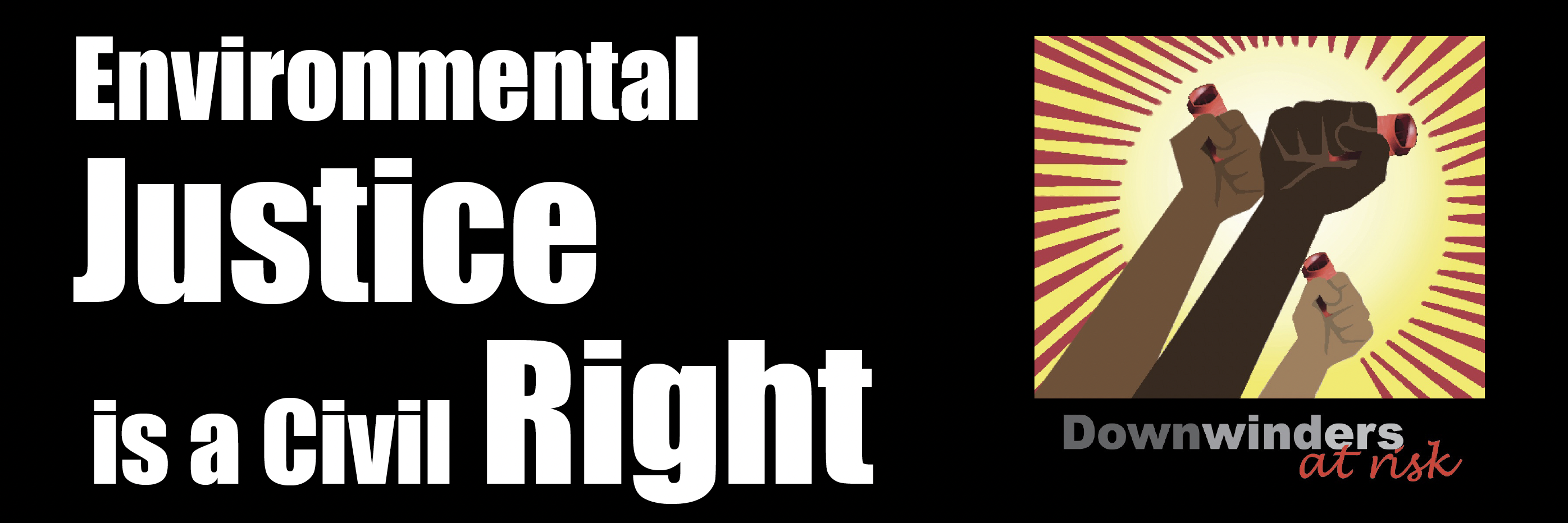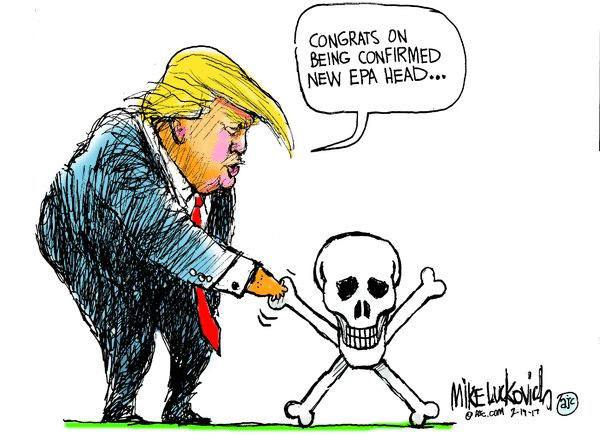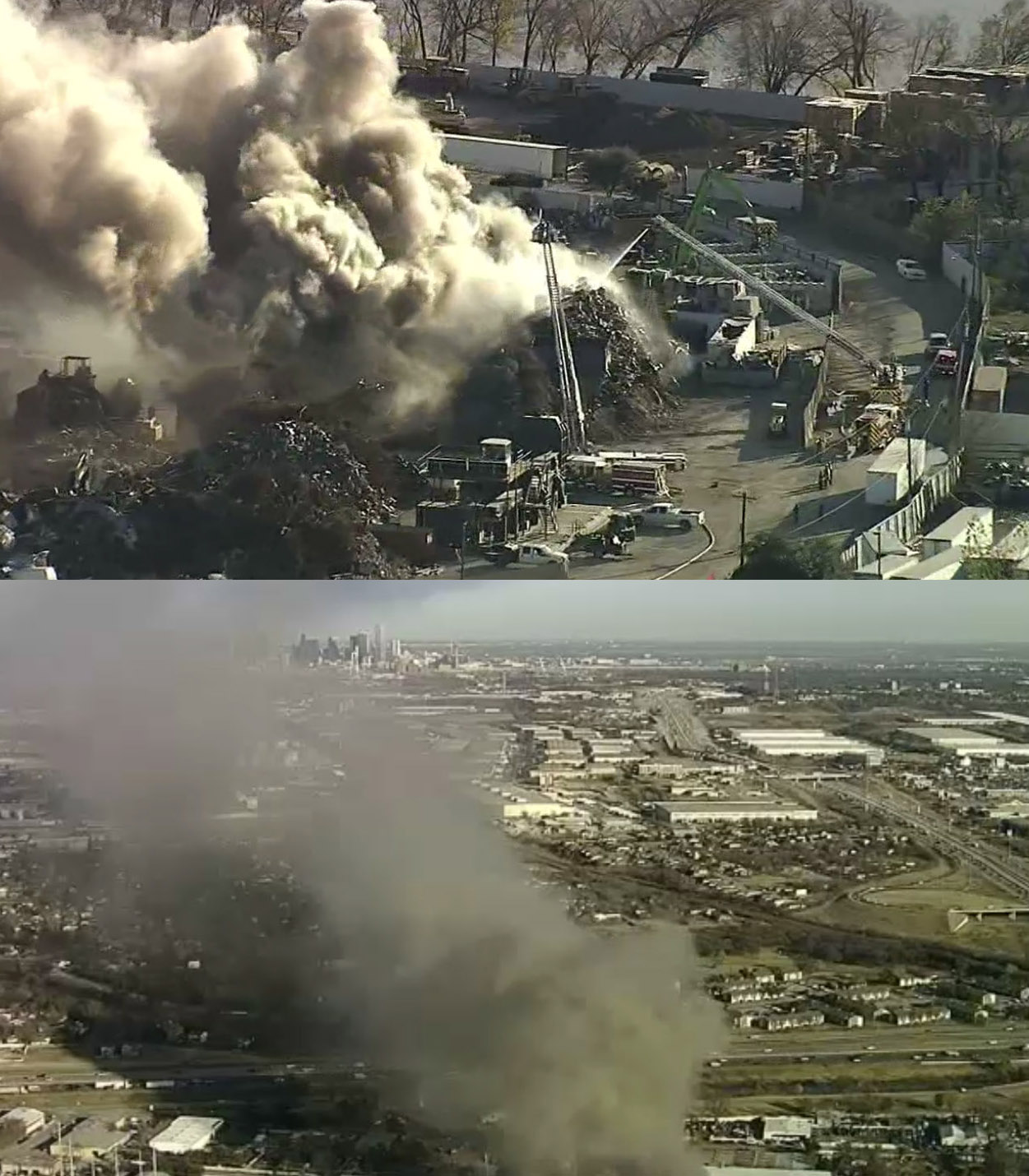Particulate Matter
How To Build an Air Monitoring Network….for Joppa and the Rest of DFW
HOW TO TURN THIS:
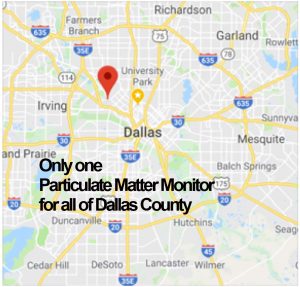
INTO THIS:
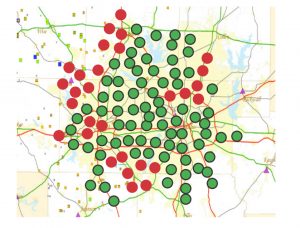
Dallas County finalizes documents for founding a regional air quality monitoring network among local governments – will your city, county, school or hospital district vote to join?
In the same week that Downwinders at Risk and the Dallas Sierra Club raised enough money to buy a full-time stationary Particulate Matter monitor for the distressed Joppa community, Dallas County Commissioner Theresa Daniel announced she was sending out documents vetted by the Dallas County District Attorney’s office for the founding of a region-wide air monitoring network to be administered by local governments.
With a working title of “The North Texas Clean Air Network,” the documents propose an Inter-Local Agreement between area municipalities, counties, school and hospital districts to oversee a system of inter-connected particulate matter monitors that insures scientific credibility, uniformity, transparency, and accountability through administration of an appointed board of member representatives.
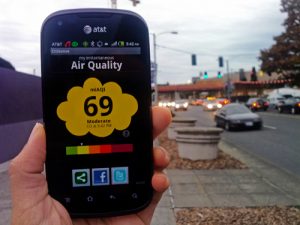 This kind of air monitoring network is vastly superior in terms of time and space to what exists now. Instead of only a few monitors for seven million DFW residents spread out over an area the size of a New England state, it would contain hundreds of locations – none further than a block or two away from where ever you are. And instead of waiting for a reading of what the air was like one or two hours previously, these networks can deliver the information in constantly updating five-second intervals, in real time.
This kind of air monitoring network is vastly superior in terms of time and space to what exists now. Instead of only a few monitors for seven million DFW residents spread out over an area the size of a New England state, it would contain hundreds of locations – none further than a block or two away from where ever you are. And instead of waiting for a reading of what the air was like one or two hours previously, these networks can deliver the information in constantly updating five-second intervals, in real time.
The result is a bonanza of data for public health administrators, school officials and urban planners, as well as a new “smart” tool for residents to use in their everyday lives. Planning a run or a walk? Chart the least polluted path. Trying to minimize air pollution from congestion? Tweak the synchronization of your stoplights until you find the timing that produces the least emissions. Track classroom absentee rates to pollution levels and enforce schools’ no idling zones. High-tech low-cost air quality monitoring is one of the most useful applications of emerging smart cities technology.
Air quality monitoring’s potential is recognized in Dallas’ “smart cities”planning chart, placing it under both “Public Health and Safety” and “Equity and Empowerment.” The recent fight over new batch plants in the Joppa’s community and the part Downwinders’ portable monitors played in it shows air monitoring is a powerful new high tech tool for citizens.
Language in the County’s documents initially includes only Dallas County, City of Dallas and City of Plano since those were the three entities represented when informal discussions began last summer, BUT ALL DFW LOCAL GOVERNMENTS ARE INVITED TO JOIN. Reportedly the documents have already been sent to both Dallas and Plano city halls for consideration and action. In Dallas, it’s expected longtime clean air advocate Council Member Sandy Greyson’s Quality of Life Committee will host a hearing on the proposal in the near future.
Given recent events in Joppa, Council Member Kevin Felder is also presumed to be a part of the effort to get Dallas’ to join.
Dense air monitoring networks are being rolled out in many other American and foreign metropolitan areas. Baltimore has proposed a 500-monitor network, Chicago at least as many. Chattanooga has its first ten being built and installed – by a laboratory at the University of Texas at Dallas.
Even though it’s had decades of air pollution problems, DFW has been slow to catch-up with this trend. The North Texas Clean Air Network would begin to address that lag with a first wave of 24 to 50 donated monitors…from that same UTD lab, where Dr. David Lary, one of the world’s leading authority on environmental sensor technologies, teaches physics.
Dr. Lary’s research was just advanced by a large Department of Defense grant to test small high-tech air monitors under a variety of environmental contaminants for possible deployment in the field. This grant and others is allowing UTD to turn its Physics Department into an air monitoring assembly line benefiting the entire region. That’s why the costs of buying and installing the first wave of DFW air monitors is so cheap.
It’s also a reason the public can trust he information they’re getting from the Network as well. Thanks to researchers at the University of North Texas Health Science Center, we know DFW residents are more likely to believe independent third party data about air quality than information they get from government sources.
The documents created by Dallas County are only the first step. Like everything else concerning environmental protection, this monitoring network is a Do-It-Yourself campaign.
ALL THREE NORTH TEXAS CLEAN AIR NETWORK DOCUMENTS TO SHARE WITH YOUR LOCAL CITY COUNCIL, COUNTY COMMISSIONERS COURT, SCHOOL OR HOSPITAL BOARD:
By-laws [pdf-embedder url=”https://www.downwindersatrisk.org/wp-content/uploads/2018/04/North-Texas-Clean-Air-Network-Bylaws-5-2.pdf” title=”North-Texas-Clean-Air-Network-Bylaws-5 2″]
Articles of Incorporation [pdf-embedder url=”https://www.downwindersatrisk.org/wp-content/uploads/2018/04/Articles-of-Incorporation-for-North-Texas-Clean-Air-Network0D0A-5.pdf” title=”Articles of Incorporation for North Texas Clean Air Network 5″]
Interlocal Agreement [pdf-embedder url=”https://www.downwindersatrisk.org/wp-content/uploads/2018/04/North-Texas-Clean-Air-Interlocal-Agreement-5.pdf” title=”North Texas Clean Air Interlocal Agreement 5″]
AIR MONITORING Q&A
What is the Mission of The North Texas Clean Air Network?
1. Provide the best, most up-to-date factual information about local air quality by supervising the implementation and maintenance of a publicly accessible, secure, and scientifically credible regional air sensor network providing simultaneous real time air quality information from multiple locations within member or contracted jurisdictions via the World Wide Web.
2. Provide fact-based public education resources on local air quality.
3. Support scientific research on local air quality by local colleges, universities, hospitals and schools.
4. Work with regulatory agencies and entities to further local clean air goals.
How much would it cost cities and counties to join the Sensor Network?
Nothing. Joining is free, and even the first 25-50 monitors are being donated by UTD and other researchers. Only small electrical and internet connectivity costs for each monitorwill be incurred.
Who will be on the Network’s Board?
1. Sitting Dallas City Council Member
2. Dallas Office of Environmental Quality representative
3. City of Dallas Public Advocate representative
4. Sitting Dallas Commissioners Court member
5. Parkland Health and Hospital representative
6. Dallas County Public Advocate representative
7. Dallas County Medical Society representative
8. Siting City of Plano Council Member
9. Plano Sustainability & Environmental Education Division representative
10. Plano Public Advocate representative
11. Dallas Independent School District representative
(Your Local Government Representative Here When They Join)
How will expansion and operating costs of the Network be paid for?
For the first year, the initial wave of air monitors isb eing donated. Future monitors and maintenance will be paid for by adoption of Network installation and connection fees, grants donations., and directed funding from local governments.
Who will be the Network’s technical supervisor?
Dr. David Lary, UTD Physics Department.
City Hall’s REAL response to West Dallas “Recycling” Fire? Let the EPA call the TCEQ in Fort Worth
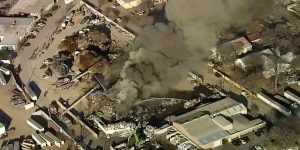
Move along. Nothing to be alarmed about. We asked the manager.
Back on December 11th, there was a serious fire at the “Sunshine Recycling” facility in West Dallas, aka, another West Dallas scrap and junk yard. Beginning at around 3 in the afternoon and continuing to burn overnight, it produced huge clouds of dark thick smoke that covered whole blocks and could be seen for miles on its way toward Irving. There were still “hotspots” requiring attention the morning after, 20 or more hours after ignition.
A Dallas Fire Department spokesperson reported cars, appliances and “other scrap” were burning with intensity.
So if you lived in the neighborhood, you might have been relieved to see your local city council member post on his FaceBook page that “The Fire Dept has conducted testing and there is no hazardous materials burning.”
You might have been reassured to hear the authorities claim, and news media report, that a Dallas Fire Department Hazardous Materials Team was on site.
But none of that was true.
After a lengthy Open Records Act request by Downwinders, many phone calls and emails, we can now piece together what really happened. The Dallas Fire Department never showed up with its Hazardous Mat unit. It never did any air monitoring at the fire. It did no testing.
Instead, at some point that afternoon, as she looked out her window at FountainPlace downtown and saw the fire’s plume wafting only a few miles away, Superfund Division Chief Susan Webster at the Regional EPA office called the Texas Commission of Environmental Quality’s regional office in Fort Worth and asked the state to send someone over to monitor the fire’s smoke. Whether she did this knowing the Dallas Fire Department had already decided not to do any air monitoring itself, or whether is was double-checking is not known. Ms. Webster wouldn’t return our phone calls.
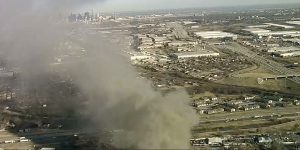
Was seeing this plume from her downtown office building what caused EPA’s Susan Webster to request TCEQ monitoring?
At around 4:30 pm Dallas Fire Department dispatch notes a call from “PCAQ” asking whether the City’s own Haz Mat team was on site and whether any air monitoring was going on. Ted Padgett, a Chief with the DFD, says that “PQAC” was really the “TCEQ” but was misunderstood on the phone.
Told no testing was going on, the TCEQ regional office in Fort Worth begins to assemble a site team and get their own monitoring equipment packed to go – hand held portable monitors.
This is the TCEQ side of that call: “TCEQ staff confirmed, via media coverage and contact with the Dallas Office of Emergency Management (OEM), that a fire was occurring at a scrap metal yard in Dallas. However, staff could not confirm the status of the fire nor what specifically was burning.” Emergency response in the Information Age.
The TCEQ monitoring team shows up in West Dallas at 6 pm – three hours after the fire has started.
Once there, the TCEQ monitoring team has the capabilities to monitor two pollutants: Particulate Matter (PM) and Volatile Organic Chemicals, or VOCs. They took one background sample away from the fire and four samples of about five minutes apiece downwind of the smoke.
The team says it doesn’t find significant VOCs in the air, but of course it’s possible those kinds of highly flammable materials like Benzene (via gas lines and tanks in the burning cars) had already been burned off. The category of VOCs is broad and covers a lot of sins, but it’s not the definitive list of “toxic chemicals” by a long shot. We know burning plastic will produce lots more Dioxins and Furans – the stuff that made Agent Orange so deadly. We know PM pollution can carry lots of bits of metals and other chemicals on them.
We know this because there was a very similar, if slightly more bureaucratic 21-year continuous incineration of car parts, plastics, used oil, dashboards, and scrap at the TXI cement plant in Midlothian, just south of the Tarrant/Dallas County lines. When you look at the before and after volumes of weird laboratory-induced chemical names you can’t really pronounce coming out of the stacks at tests controlled by the company, there’s no question burning junk fills the air full of junk too.
But it you don’t look for it, you won’t find it.
TCEQ was only looking for two kinds of pollutants that night, so it didn’t find anything else. It didn’t even bother to collect PM samples for “chemical characterization” – that is, determine what, if any, toxic baggage like lead or arsenic the PM particles were allowing to hitch a ride on them during the fire. Without such samples, it’s impossible to say the plume was not “toxic” in the “Really-Bad-For-You,” traditional regulatory meaning of that term.
Then there’s what the TCEQ team did find.
TCEQ recorded only four PM samples the whole evening. Half were alarmingly high: 113 ppb near the intersection of Singleton and Westmoreland, over three miles away, and 180 ppb near the intersection of Chalk Hill Road and Singleton between one and two miles from the fire.
Two other samples, one taken way north along Bernal And Hammerly, and further south down Westmoreland at Canyon Bluff showed “background” levels of PM at 14 ppb and 18 ppb respectively.
The EPA annual standard for PM exposure is 12 ppb, the daily standard is 35 ppb. The results from two of the four samples TCEQ took were three and five times the daily standard. That’s “toxic” in the “Science-Says-That-Stuff-Will-Kill-You” way.
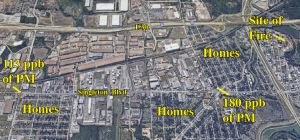
The TCEQ inspectors left after only about an hour. No other monitoring took place for the duration of the fire, which was still going the next morning. So out of approximately 20 hours the incident lasted, only one was monitored.
TCEQ did note that the wind was out of the West at 10 mph and that “Potentially Impacted Receptors” included residences and businesses between Highway 12 and I-30.
There’s no record of the Dallas Fire Department, or anyone at Dallas City Hall, asking for the TCEQ’s monitoring results and TCEQ never sent them to anyone there. It wasn’t until Downwinders requested the results through an Open Records Request that any member of the public had seen the full record of what was done.
But some West Dallas residents complained about health effects from the fire to State Senator Royce West. One email the Senator got related how the fire had caused “my throat to become scratchy, coughing …. The smoke was so thick it hovered over all of West Dallas. The smell was horrific, very strong & lingering. You could smell it from loop 12 & all over West Dallas & I’m sure the lingering included other local surrounding areas in our city. The fire department said by it being cold outside, it causes the materials burning & the smoke in the air to continue to stay low where it affects us when breathing.“
Senator West’s office wrote a letter to the TCEQ regional office asking about what they’d found when they did their air monitoring. Here’s the reply he got:
“Smoke is a complex mixture of gases and fine particles. While the main pollutant of concern in smoke is the particulate matter, smoke may also contain other pollutants that are dependent on the product that is burnt, the moisture content of the product, and the fire temperature. Particles from smoke are often very small in size and have diameters that are 2.5 micrometers and smaller (PM 2.5). These particles are respiratory and eye irritants. Short-term exposures (hours-weeks) to these particles can cause headaches, respiratory (e.g., runny nose, scratchy throat, irritated sinuses, and bronchitis) and eye irritation (e.g., burning eyes). However, these symptoms typically disappear quickly once the person gets out of the smoke. Exposures to high concentrations of these particles can cause persistent cough, phlegm, wheezing, and difficulty breathing. While some people are more susceptible to the adverse health effects of smoke, particles from smoke can also cause respiratory symptoms, transient reductions in lung function and pulmonary inflammation in healthy adults. Children, older adults, and people with pre-existing heart or lung disease are more susceptible to lower levels of smoke than healthy people…(monitored) PM ranged from 0-180 ppb…..”
No mention of the scientific consensus that even short term exposure to low levels of PM can cause a host of permanent heath injuries, including brain and learning disorders, immune damage, and life-long respiratory ailments. No mention that fully half the samples taken by TCEQ were over 100 ppb and exceeded the 24-hour EPA standard for that specific pollutant. In fact, TCEQ says, all of your problems should disappear once you get out of the smoke – or your house, if the smoke from the toxic fire down the street is making it unlivable.
There’s an email from a TCEQ Special Assistant to the Deputy Director in Austin that asks: “…is there any way to put the highlighted PM detection in context….is this the level we would normally expect to find in smoke; at what level would we take action, can hand-held equipment quantify, etc?
She didn’t get a reply to those questions that we saw. Probably because no one at the Austin or Fort Worth TCEQ offices really knew the answers, or didn’t want to write them down and send them to a State Senator.
TCEQ was able to tell the Senator West that, despite plastics and metals and other materials on-site capable of producing toxic smoke, there were “no hazardous chemicals” on-site or involved in the fire.
How did it know? TCEQ inspectors asked the manager of the facility. There was no independent inspection.
And that, Dear Citizens, is how you’re protected by potentially toxic fires in Dallas, Texas. Feel safer?
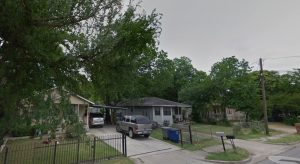
Homes along Singleton probably exposed to some of the worst fallout of the December 11th fire.
Along with the high PM levels our PM Committee found in Joppa, this incident is another case study of why Dallas should have its own 24/7/365 dense network of air quality monitors – monitors that will be there when such a fire starts, as well as when it’s finally extinguished. Monitors who won’t make the value judgement about when the A Team should be called out. Because along with all the other questions this response poses you have to ask yourself if something like this happened in Preston Hollow or Uptown, would the Dallas Fire Department have still shown-up without its hazardous materials crew in tow?
This incident is Exhibit A why Dallas should also be incorporating public health into emergency responses. Why doesn’t the Fire Department have access to its own toxicologist or public health expert who could tell them what to sample for, where to sample, and whether the fire really posed any concern to neighbors or not? Why isn’t the automatic response to a fire like this to send out its own hazardous materials team instead of outsourcing it to TCEQ, 30 minutes away in Fort Worth?
December 11th allows us to peak behind the the modern post 9/11 facades of “Public Safety” and “Emergency Response” we all take for granted and see what a decrepit cynical reality is in charge of assuring us that “there’s no reason to be concerned.” That’s why we need a new reality.
On Eve of Council Vote, First-Ever Monitoring Finds PM Levels Already Too High in Joppa
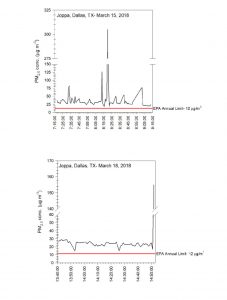 Downwinders PM Committee did the unthinkable this last week and monitored ambient air quality in the tiny Joppa community, where two proposed new concrete batch plants coming up for a Dallas City Council vote on Wednesday want to set-up shop.
Downwinders PM Committee did the unthinkable this last week and monitored ambient air quality in the tiny Joppa community, where two proposed new concrete batch plants coming up for a Dallas City Council vote on Wednesday want to set-up shop.
This was unthinkable because despite months of controversy over the siting of yet more concrete batch plants in a predominantly-minority neighborhood already jammed with heavy industry nobody had thought of doing it before our team of SWAT Citizen Scientists showed-up.
Not the batch plant operators seeking approval of their permit requests.
Not the staff of the City of Dallas, who are recommending approval of those requests.
No…it was our all-volunteer “Soot Sisters” armed with their newly acquired fully-calibrated portable PM monitors who had the audacity to actually see what levels of pollution Joppa residents were breathing now – before the addition of any new sources of bad air.
After we got our results, we kind of understand why air monitoring was unthinkable to those other folks: because the air in Joppa is often unbreathable.
Since our monitors arrived late to the scene in Joppa, we’ve only been able to get snapshots of air quality before the scheduled council vote in the 28th. Two hours on this day, another two on that day. The sample is very small, but it’s also very disturbing.
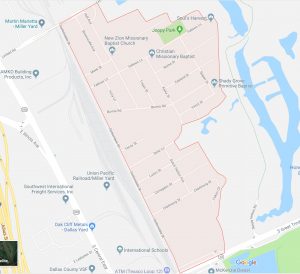
Joppa is already surrounded on three sides by heavy industry
First, they found significantly higher levels of ambient PM pollution in Joppa than was recorded by the only official EPA PM monitor in Dallas, located near Stemmons Freeway during the same time period, and higher than the levels the Committee found at various DART bus stops and routes they’ve also been monitoring as part of the new Green Streets bus electrification campaign
Levels in Joppa were as much as 30 to 50 % higher than the EPA monitor – even on a Sunday. Residents there are already breathing more PM pollution than residents in other parts of the city.
Secondly, if the Committee’s results were extrapolated over the course of a full year, these daily levels would add up to a violation of the EPA’s annual PM pollution standard. That is, if our findings are indicative of daily exposure, Joppa could already be exceeding the EPA standard and any additional PM pollution would only make matters worse.
You can read the entire short report on Joppa, Round one, prepared by Dr. Tate Barrett, our PM Science Director here: Joppa Report #1

Shannon Gribble and Cresanda Allen on a monitoring run in Joppa
Because there’s been no monitoring in Joppa until now, it’s possible the area has been in routine “non-attainment”of the EPA PM standard. It takes three years of annual averages above the standard, recorded at an officially designated EPA monitor, to classify an area as non-attainment and qualify for new federal new controls. However, Dallas’ only official EPA PM monitor is nine miles north of Joppa near Stemmons Freeway and Mockingbird.
Study after study has shown how People of Color generally, and African-Americans specifically, are disproportionately exposed to, and harmed by, PM pollution. While Dallas’ one and only EPA-designated PM monitor could be accurately recording PM levels north of the Trinity River, it’s not reflecting the reality of residents in Joppa, West Dallas, Cadillac Heights, or Cedar Crest.
There’s been a lot of discussion recently concerning inequity of resources in Dallas. It’s not news that this inequity extends even to the very air residents breathe and how the current regulatory system ignores those differences. But our Joppa monitoring casts a new spotlight on that fact. No equal protection is possible unless you have equal access to official monitors which determine enforcement of the laws.
That’s why when we turned our first results over to District 7 Council Member Kevin Felder on Friday, we recommended the City either consider moving Dallas’s sole EPA-designated PM monitor to Joppa, or pay for a second EPA-designated PM monitor to be located in Joppa, to begin recording data as soon as possible to determine if the area is indeed violating the EPA PM standard year-round.
These Joppa results also become another compelling example of why DFW needs its own local air quality monitoring network. It’s ridiculous that there’s only one PM monitor for all of Dallas County’s 2. 5 million residents stretched out over 900 square miles. PM levels as low as 5 ppb
Downwinders has joined with local universities and governments in pursuing the establishment of a local air quality monitoring network that could place inexpensive year-round PM monitors throughout Dallas and North Texas with real time information accessible to the public by a simple phone app. Dallas County Commissioner Theresa Daniels is expected to sponsor a resolution for the creation of such a network at the Commissioners Court in the coming weeks.
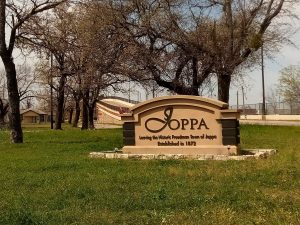 Dallas should follow. The City’s Office of Environmental Quality approves or disapproves of zoning changes like the ones being sought by the batch plants in Joppa without knowing what environmental burdens residents are already carrying. Even though they have the ability and capacity to do real time monitoring of neighborhoods where new industry wants to expand or locate, the OEQ never does. Nor does it have a single toxicologist or public health expert on its staff who’d want to see that kind of information before passing judgement on a zoning request. Instead it’s headed up by a lawyer and is mostly concerned about not making any definitive statements about local environmental health problems or environmental justice issues at all. With all the house-cleaning at Dallas City Hall since a new city manager took control, the OEQ now looks to be one of the last repositories for Business As Usual thinking. That must change.
Dallas should follow. The City’s Office of Environmental Quality approves or disapproves of zoning changes like the ones being sought by the batch plants in Joppa without knowing what environmental burdens residents are already carrying. Even though they have the ability and capacity to do real time monitoring of neighborhoods where new industry wants to expand or locate, the OEQ never does. Nor does it have a single toxicologist or public health expert on its staff who’d want to see that kind of information before passing judgement on a zoning request. Instead it’s headed up by a lawyer and is mostly concerned about not making any definitive statements about local environmental health problems or environmental justice issues at all. With all the house-cleaning at Dallas City Hall since a new city manager took control, the OEQ now looks to be one of the last repositories for Business As Usual thinking. That must change.
Downwinders PM Committee was back out in Joppa this last weekend for more rounds of air monitoring. Those results will be dowloaded and analyzed by Dr. Barrett and presented to the City Council on Wednesday by PM Committee member Misti O’Quinn. Stay tuned.
Two of these “Soot Trackers” Are On Their Way to Downwinders…and You
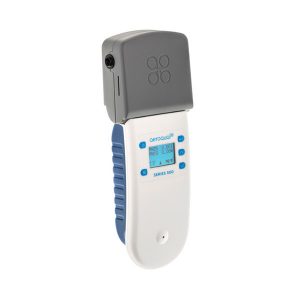 Thanks to a grant from the Simmons Sisters Foundation, Downwinders is proud to announce we’ve purchased our first two portable Particulate Matter sensors for our No Safe Level Campaign against PM pollution.
Thanks to a grant from the Simmons Sisters Foundation, Downwinders is proud to announce we’ve purchased our first two portable Particulate Matter sensors for our No Safe Level Campaign against PM pollution.
They’ll be the only PM monitors of their kind in the region, and their arrival will inaugurate a new era in DFW citizen-empowered science.
The sensors are made by AEROQUAL, a New Zealand company, and you can’t find them on Amazon. They measure both PM 10 and PM 2.5 (microns) at the same time. Their sensor heads use laser and optical sensors to measure light scattered from particles passing through the laser beam. A built-in fan ensures a stable and precise flow of sample air to the sensor. They also compensate for humidity by way of an on-board humidity sensor.
Each comes with a long-life Lithium battery which allows for 24 hours of remote operation between charges. Recharging takes just 3 hours. The monitor can be plugged-in and left to run indefinitely. Besides displaying levels in real time, measurements can be stored on the device and downloaded later to a computer via the USB cable and bundled software.
They come factory-calibrated to European Union standards and are capable of being re-calibrated for side-by-side use with an EPA monitors, or any other local baseline. 
These monitors have two parts – a base and a a detachable sensor head – making them even more useful. In the future Downwinders can buy other kinds of sensors from AEROQUAL to plug into the base and test for gaseous pollutants like Ozone, or Sulfur Dioxide. In all, 28 other sensors are available.
Before now you either had to buy $16,000 PM sensors that were fully calibrated or settle for much less reliable equipment. But the technology is moving so quickly and demand is scaling up so fast that a middle-income niche market for scientifically-rigorous instruments is beginning to provide opportunities to non-profit groups like Downwinders, and the public in general.
Along with these portable sensors, we’re also ordering stationary PM monitors as part of the regional network being established by UTD and others.
As a result of this influx of technology, Downwinders is creating a PM Project Science Director position to maintain the integrity of our research. The Science Director will be in charge of these monitors, training citizens on how to operate them, and overseeing their use in the field.
Our plans are to begin using the sensors in neighborhoods and suspected hot spots as soon as possible to help us fill out our PM Map of DFW. We want to be able to loan them out to those citizens who’ve gone through the training and have a problem they want to investigate. They’ll also be available for use during accidents, explosions, and fires.
We’re not letting state and EPA rollbacks stop us. We’re creating our own regional air monitoring network. Are you interested in joining? Stand by. We’re just getting started.
New Study Links PM Pollution to Depression and Suicide
Reviewing a decade of death statistics revealed a 16% increase in mortality risk on the first day of haze and a 27% increase on the second day compared to better air days.
If the haze was accompanied by high ozone pollution, the risk of death increased by 79%.
As shocking as this sounds, it aligns with other recent studies that have found a connection between short-term increases in air pollution and aberrant mental behavior. Significantly higher rates of Autism, Parkinson’s, ADHD and juvenile delinquency have all been linked to PM pollution, most at ambient levels assumed by regulators to be “safe.”
PM pollution has even been linked to low stock market performance in more than one study.
Researchers believe air pollution affects a person’s emotional state, making them more likely to feel depressed. They urge mental health professionals to be aware that bad air days are triggers for acute episodes.
PM pollution is so microscopically tiny it not only goes deep into your lungs, it actually can pass through your lung lining directly into your blood stream. Think about the places where your body uses a lot of blood – your heart and your brain. We’ve known PM causes heart attacks and strikes for some time. But research linking it to a wide variety of brain disorders is only fairly recent.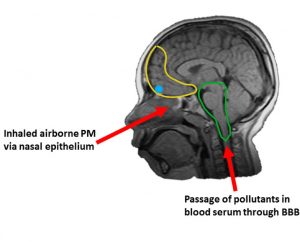
Authored by faculty at Hong Kong Polytechnic University, this most recent study examined more than 284,000 deaths, including those among people with mental and behavioral disorders including depression, bipolar, schizophrenia and dementia. It defined “haze days” as those on which pollutants gather in the air and cut visibility, usually dry days with low winds. In the study period from 2007 to 2014, there were 111 haze days when particle pollution was on average twice as high.
These findings are compatible with a recent Belgian study, which reported “[Short-term] increases in outdoor air pollutants such as particles or ozone can trigger suicide, particularly during warm periods, even at concentrations below the European thresholds.”
Unfortunately, we may have a local way to further prove this hypothesis. On October 19th of last year there was a still unexplained catastrophic air event that caused PM levels to go much more than twice a high as “normal,” accompanied by an increase in ozone pollution so severe it bumped the entire regional average by a part per billion. Could an examination of death certificates in Ellis, Dallas, Tarrant and Denton Counties reveal if this really “bad air day” caused a spike in North Texas suicides?
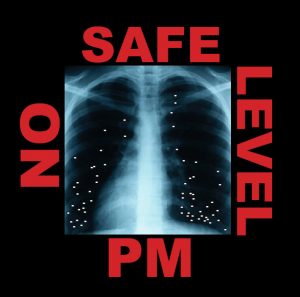
Downwinders at Risk’s “No Safe Level” PM Pollution Campaign Committee has scheduled its next meeting for Saturday March 10th at the Meadows Center at 2900 Live Oak.
How Do You Make Progress in the Trump Era? Two Words: Particulate Matter
Public Health
Economic Development
Transportation
Housing
Childhood Development and Education
Environmental Justice
Crime
In the same way lead exposure was linked to lower IQ in children and anti-social behavior like crime, PM Pollution is now being linked to learning disabilities and juvenile delinquency.
And in the same way public health mandated the removal of lead from gasoline and paint, many public policy measures are needed to help eliminate PM pollution exposure.
Many if not most of these are local in nature. They don’t need EPA or TCEQ approval.
__________
In California, buffer zones between new homes and freeways are under consideration because so many 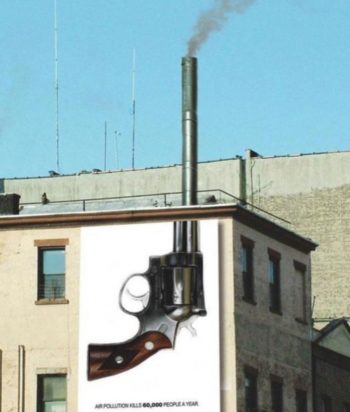 studies have shown children living next to freeways suffer significantly higher rates of Autism and learning disabilities.
studies have shown children living next to freeways suffer significantly higher rates of Autism and learning disabilities.
Some local governments, school districts, and public transit agencies, including DART are beginning to electrify their bus fleets to reduce exposure to PM pollution and save money. “No idling zones” around schools and are being enlarged.
In DFW, Downwinders is sponsoring a broad public health initiative aimed at identifying and reducing PM Pollution from all sources, called “No Safe Level.”
Just as PM pollution poses all kinds of adverse health effects it also provides lots of opportunities at the local level to make things better for your neighbors:
Safer homes and schools.
More sustainable public transit.
More equitable zoning.
Pollution controls.
Public Health protections in the neighborhoods that need them most.
We can make progress. But we need your help.

“NO SAFE LEVEL”
Particulate Matter
CAMPAIGN MEETING
SATURDAY, JANUARY 27th
2 – 4 PM
Hill Country Room
Meadows Conference Center
2900 Live Oak in Old East Dallas
Get the Basics on PM
Help Pick Campaign Targets and Create Strategies for Change
Your Hosts, Our No Safe Level Committee members:
Cresanda Allen
Shannon Gribble
Amanda Poland
Evelyn Mayo
Misti O’Quinn
FOLLOW-UP: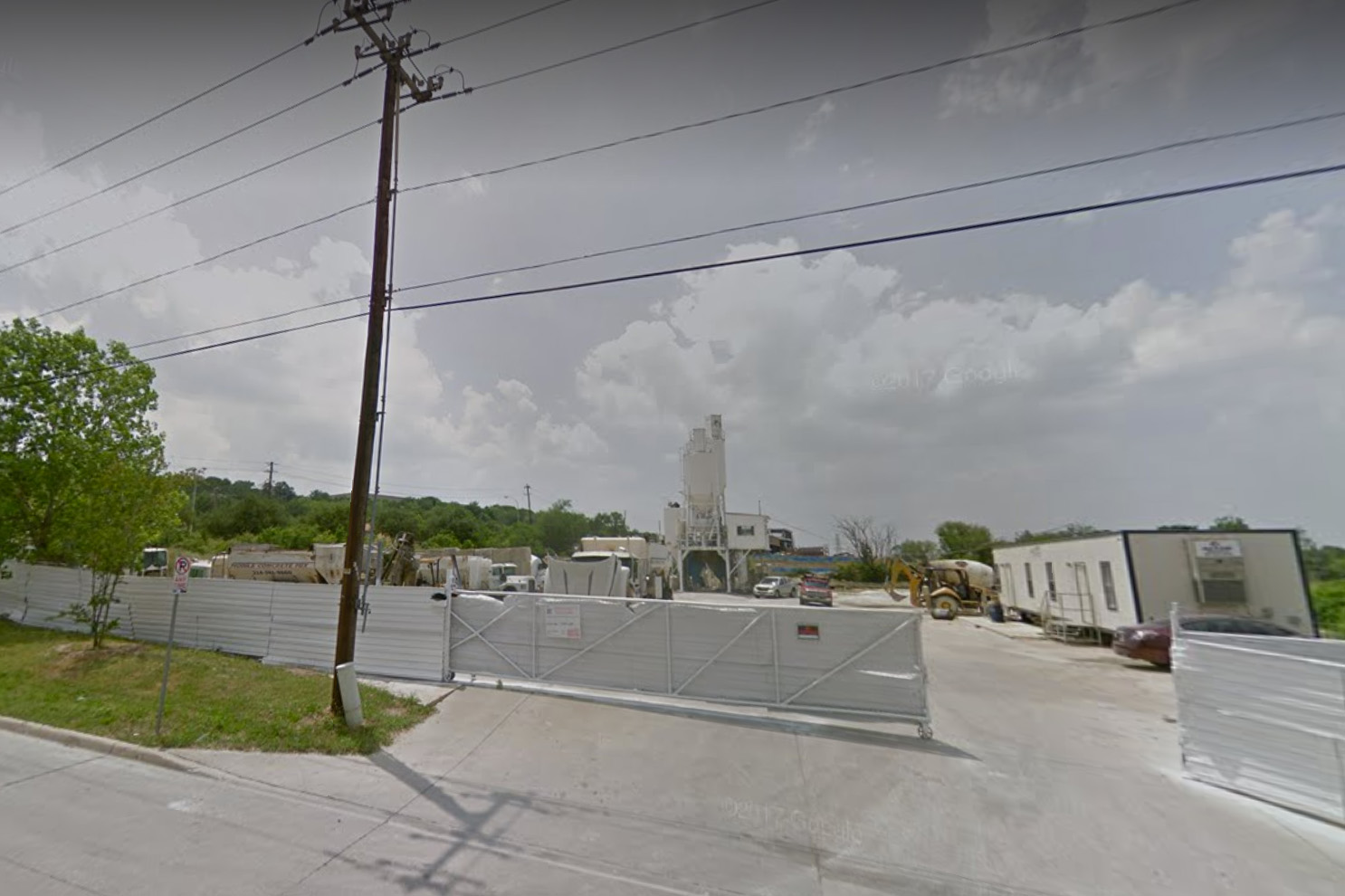 West Dallas residents won their fight to close the RamCrete batch plant at the January 10th Dallas City Council meeting. The vote was 14-1 with Council Member Rickey Callahan the lone outlier. However, The City’s Office of Environmental Quality didn’t distinguish itself when a spokesperson reassured Callahan that any facility meeting TCEQ standard exemption permit levels of pollution “could not be causing a problem.”
West Dallas residents won their fight to close the RamCrete batch plant at the January 10th Dallas City Council meeting. The vote was 14-1 with Council Member Rickey Callahan the lone outlier. However, The City’s Office of Environmental Quality didn’t distinguish itself when a spokesperson reassured Callahan that any facility meeting TCEQ standard exemption permit levels of pollution “could not be causing a problem.”
Incompetence or Negligence? It Doesn’t Matter: Local Air Pollution Catastrophes on Oct 19th & Dec 11th Show Why DFW Must Have Its Own 21st Century Independent Air Quality Monitoring Network
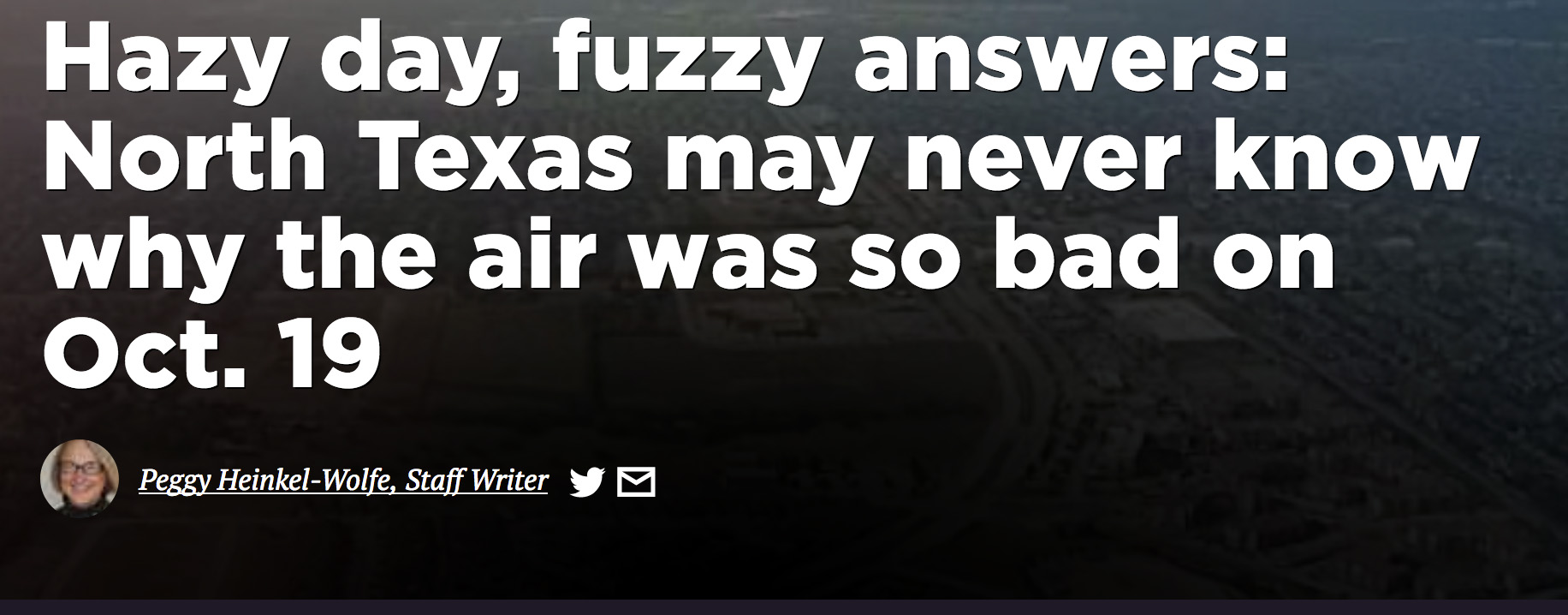
Q: What caused PM and Ozone pollution to spike so high and fast on Oct 19th that health alerts had to be issued from Dallas to Denton?
A: The Texas Commission on Environmental Quality couldn’t care less.
That’s the take-away from Peggy Heinkel-Wolfe’s story that appeared over the weekend in the Denton Record Chronicle.
You may remember we reported on the mystery shortly after it happened and tracked down all the local and non-local suspects cited by officials in the media that day. None of them turned out to be the cause of an air pollution incident that was so potent it raised the entire regional ozone average a whole part per billion and forced PM levels into the triple digits.
Heinkel-Wolfe goes one step further and makes inquires from the TCEQ itself. And the run around she gets is Catch-22 material.
TCEQ says they can’t investigate an air pollution problem unless there’s a known cause. But if there’s a known cause, what you’ve got there really isn’t an investigation any more, it’s an enforcement action, isn’t it?
This article may be the single most compelling case for why DFW needs its own locally-controlled air quality monitoring network. Find it here.
Q: Where are the results of the air samples the Dallas Fire Department supposedly took when a West Dallas Recycling was sending large plumes of black smoke over the surrounding and downwind neighborhoods on December 11th?
A: Nobody seems to know.
A huge pile of metal scrap burned and smoldered for over 24 hours at Sunshine Recycling on Ruder Street in West Dallas on December 11th. Thick plumes of smoke streaked the sky for half a day and into the night.
According to WFAA-TV, a Fire Department Hazardous Materials response team was on site because there were hazardous materials on site – although exactly what those were, or are, remain nameless.
That evening the Dallas City Councilman who represents West Dallas, Omar Narvaez, posted on his FaceBook page that “The Fire Dept has conducted testing and there is no hazardous materials burning.”
Really? Because when a scrap yard like that catches fire, you can bet there’s “hazardous materials” burning whether it’s officially noted or not. Plastic tubing and hoses become Dioxin-generating embers. Used oil has all kinds of metals in it that attach themselves to the smoke particles. Vinyl can generate very toxic fumes. Just the PM pollution from the smoke alone was enough to trigger all kinds of harmful health impacts. Very likely the entire pile of metal waste that was burning that night was indeed “hazardous.”
But OK, you say you took tests and they showed nothing out of the ordinary? Let’s see them. In December Downwinders submitted a Texas Open Records Act request to the City of Dallas for the results of those tests. We’re still waiting. As of today, and despite three phone calls to the Open Records Division of the City Secretary’s office, we still don’t have what it’s supposed to take no more than 10 business days to get. It’s been a month and counting. We’re trying to get some legal help to extract the information. Stay tuned.
For $500 a piece, we can install a dense grid of PM monitors across the region, tie them all together and present the information to the public in a transparent accessible way. It can be locally-controlled, directed by scientists, and independent of political influence.
It would automatically track plumes in real time, not an hour ago. It would give you reliable and specific levels of pollution rather than vague reassurances. It would transfer the power from officialdom to citizenry.
That’s the new Network we’re building. Stay tuned.
New Grant Gives Us a Campaign Budget for 2 Years
 Downwinders at Risk is proud to announce we received a very generous $40,000 grant from the Dallas-based Simmons Sisters Fund in December to cover the costs of our “No Safe Level” PM pollution protection campaign for the next two years.
Downwinders at Risk is proud to announce we received a very generous $40,000 grant from the Dallas-based Simmons Sisters Fund in December to cover the costs of our “No Safe Level” PM pollution protection campaign for the next two years.
This money will be going to buy both portable and stationary PM pollution monitors, educational and outreach materials, including videos, websites and social media campaigns, new studies we need to advance the cause, and a host of other things we would not have even thought possible before the arrival of this grant. We can’t tell you how excited we are to have this kind of budget. We can really start to make a difference right out of the gate.
But we still need you. We need you to show-up at our monthly meetings and learn how you can plug into this campaign, which has the potential to reshape public policy in so many ways. We need you to invite us to your PTA, club, or church gatherings to present the information about PM that makes every audience gasp. And yes, we still need your donations – to pay for salaries of our one and half staffers, other projects, and special events like our Root and Branch Conference.
We just got a huge vote of confidence in our new campaign from the Simmons Sister Fund. Please consider giving your own as well. Thanks.
New Study Adds To PM Harms: Exposure Linked to Increases in Juvenile Delinquency
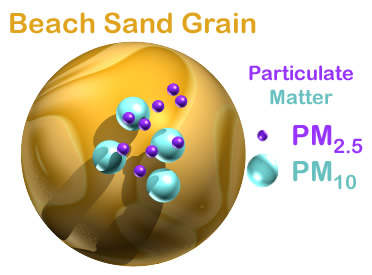
The first study to look at the effects of PM pollution exposure on the social behavior of children found that that the more bad air a child inhaled, the more likely they were to engage in delinquent activity.
Published in December’s Journal of Abnormal Child Psychology by researchers at UCLA, UC Irvine, and Orebro University in Sweden, “Longitudinal Analysis of Particulate Air Pollutants and Adolescent Delinquent Behavior in Southern California” is already a landmark study in the growing field of PM research. It further demonstrates the similarities between PM and the handful of other neurotoxins linked to delinquency – like lead.
While past studies have identified a range of neurological impacts associated with PM pollution, including Autism and Parkinson’s Disease, this is the first time it’s been linked specifically to anti-social behavior. According to the authors, cumulative exposures were found to result in developmental differences lagging as many as 3 to 4 years behind the norm.
Not surprisingly, African-American boys, and children who lived in neighborhoods with poorer air quality and less green space had both higher PM exposure levels and higher delinquency rates.
This is only the latest reason why Downwinders at Risk has identified PM as Air Pollution Enemy #1. There’s not another pollutant that’s been linked to so many different health harms – from lung cancer to strokes and heart attacks, to immune and reproductive system damage to a host of brain illnesses both profound and subtle.
All of these harms are caused by “normal” levels of exposure to PM. And that’s why that exposure level must come down.
West Dallas Batch Plant Vote THIS Wednesday, Dallas City Hall

The RamCrete Batch Plant at the corner of Marilla and Commerce in West Dallas has been so poorly run that last fall the Dallas City Planning Commission took the unusual step of overruling staff recommendations and voted to close the facility down: lock, stock and particulate matter.
RamCrete’s operators are appealing that shut-down decision to the full council Wednesday. Action was postponed from December based on a request from the company.
Historically, West Dallas has been used as a dumping ground for both industries and people the Dallas establishment didn’t want in their own backyards. Obsolete zoning allows all kinds of industrial activity to be sited too close to residential areas.
This specific batch plant is only a symptom of that zoning, but it presents a clear and present danger to West Dallas residents that can be stopped with this vote.
Downwinders at Risk’s “No Safe Level” Campaign to reduce Particulate Matter exposure has identified this council vote as an important first step in decreasing the emissions of PM in this neighborhood and West Dallas as a whole.
The public hearing on this permit denial is #51 on Items for Individual Consideration on the Council’s Wednesday’s agenda. Citizens will have 3 minutes or less to speak in favor of or against upholding the Planning Commission’s decision to yank the permit.
We’re sorry we can’t give you an exact time this will come up, but City Hall veterans know these things are unpredictable. You pretty much have to show up at 9 am and stay until they get to it.
If you can, please come join us for the first PM battle – and we hope victory – of 2018.
